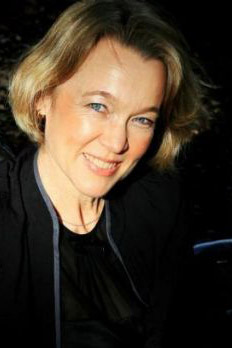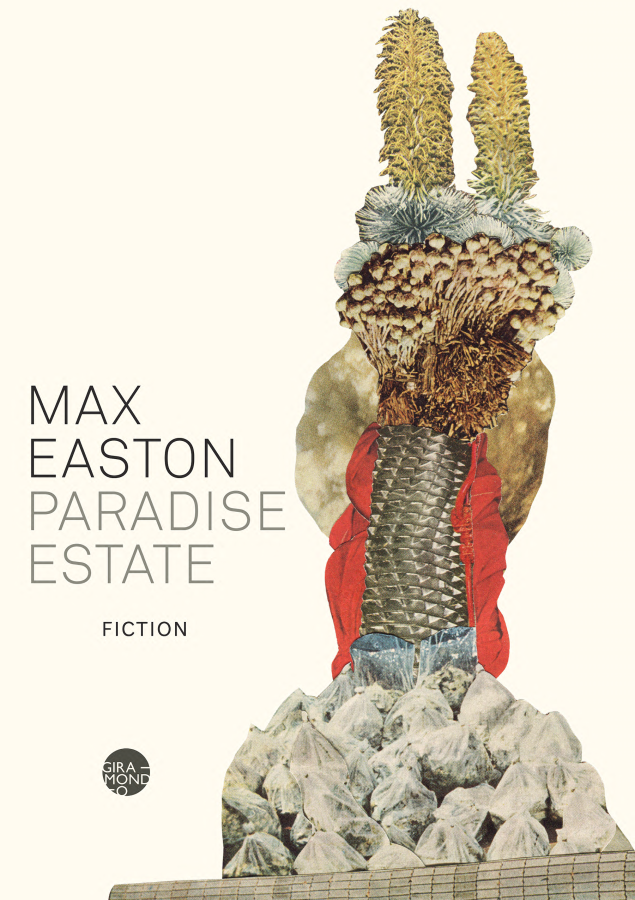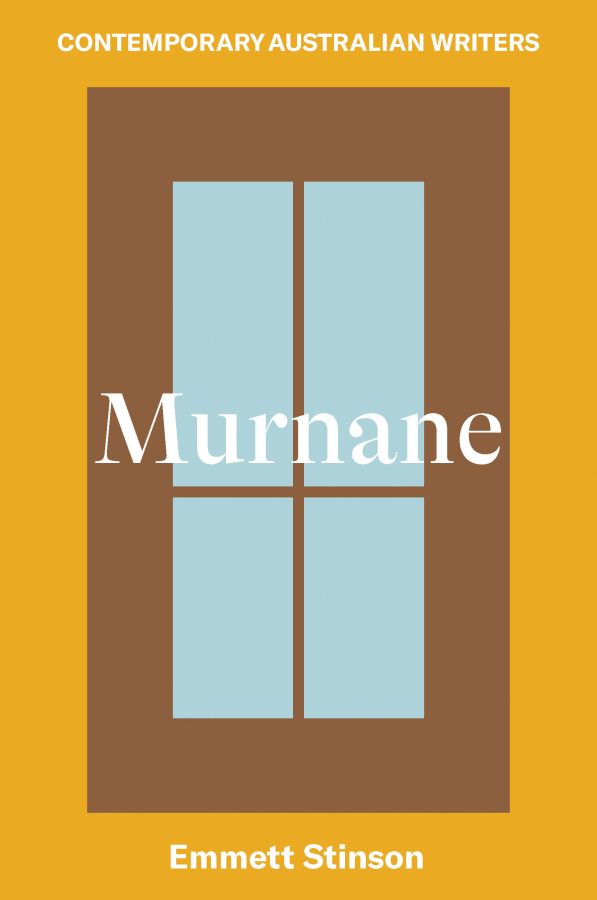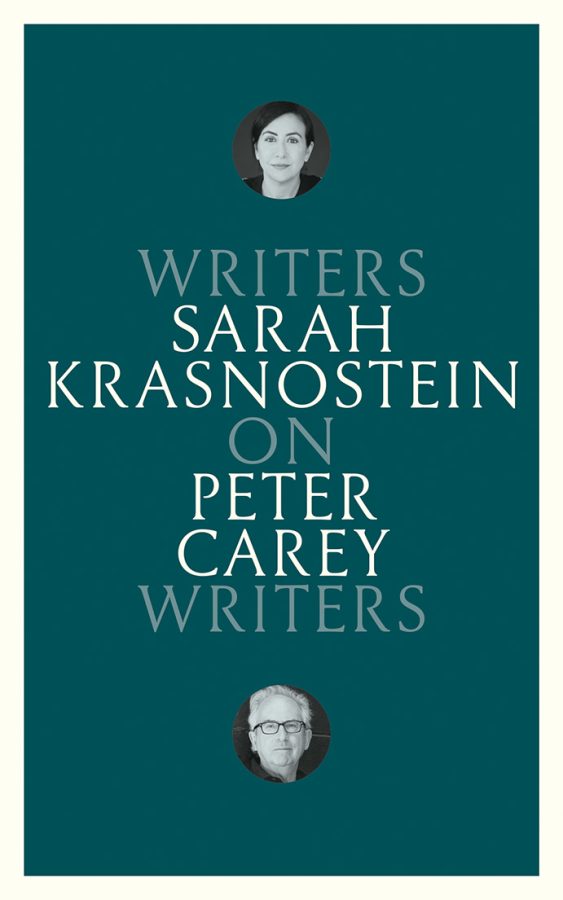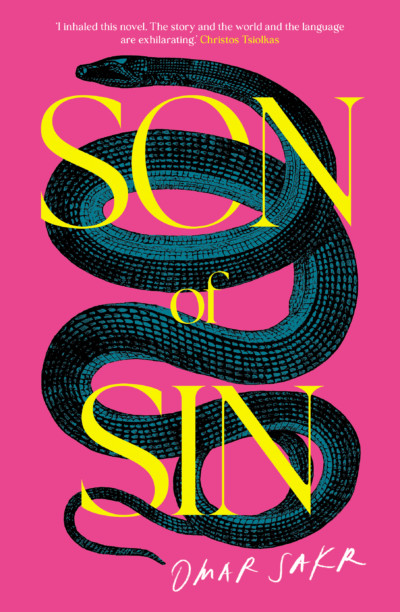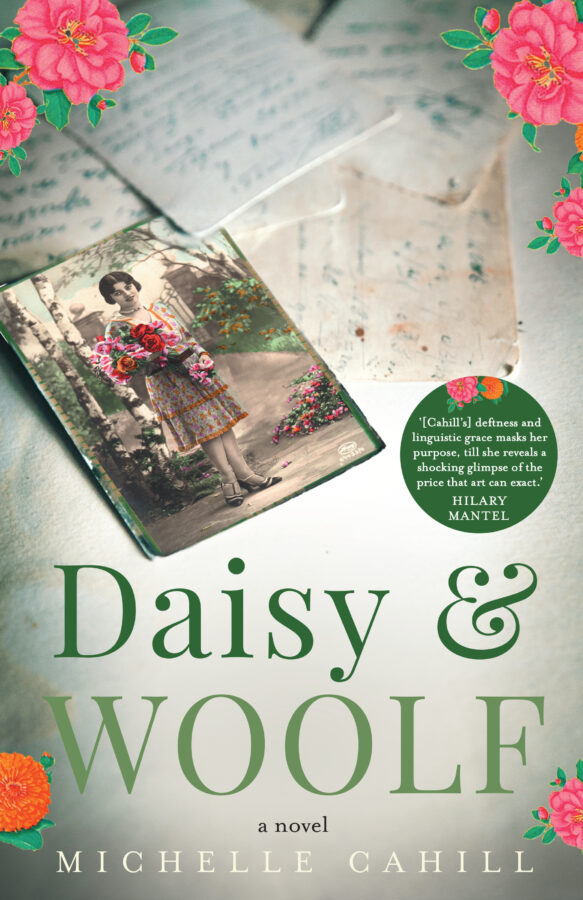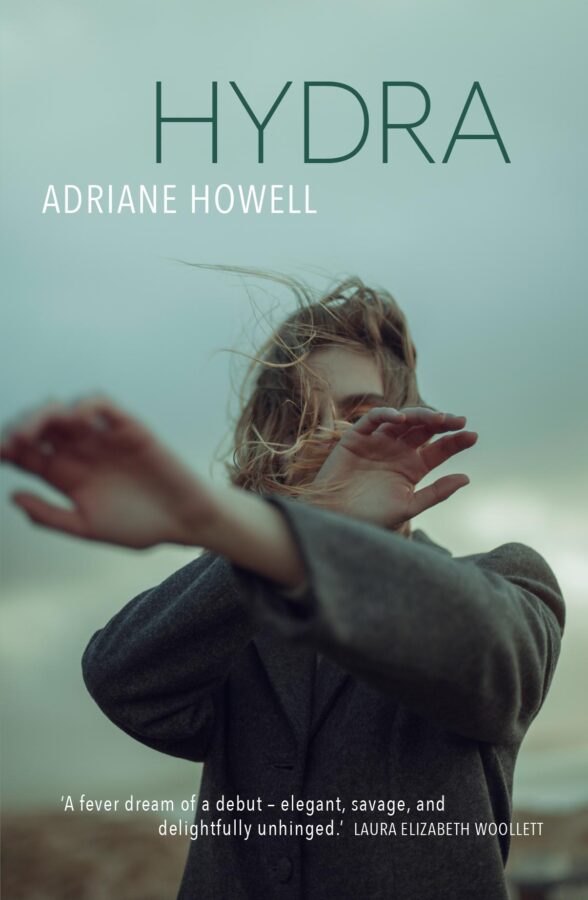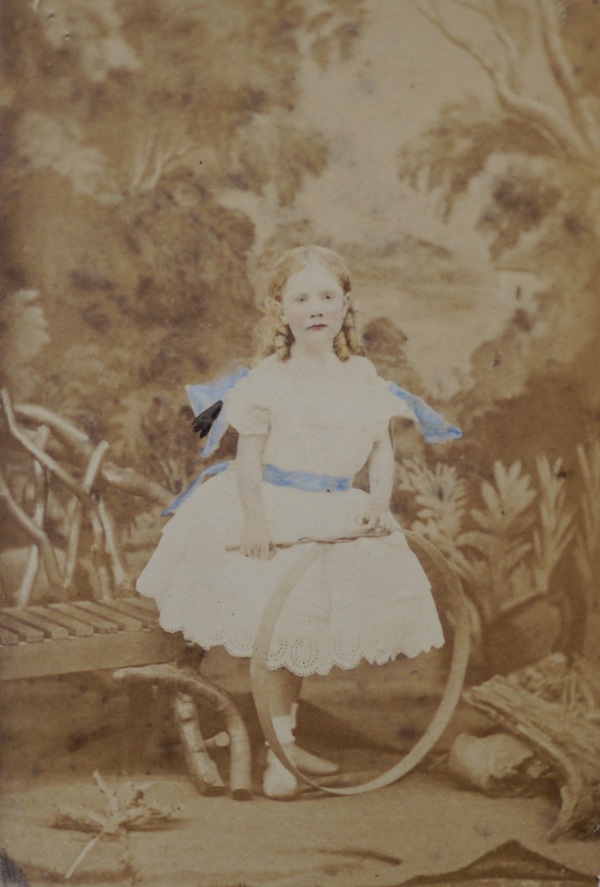
When I first went in search for Elizabeth von Arnim I got on a ferry. I thought, for once, I should do what proper biographers do and begin at the beginning – where she was born. Because so far, all three proper biographers had got it wrong. The first biographer, Elizabeth’s daughter, knew that her mother was born in Australia but wasn’t sure where. The second claimed she was born in New Zealand, presumably because she was from the same Beauchamp family as her cousin, Katherine Mansfield. And the third, and most recent, who had followed Elizabeth’s footsteps throughout Europe, but not her infant footsteps around Sydney Harbour, also misplaced her subject’s birthplace, describing it as ‘overlooking Rose Bay’ and and remarking ‘that the site of her birth is still known as Clifton Gardens.’
This is the kind of mistake that Elizabeth would have delighted in, a woman who set traps for future biographers. Clifton Gardens is in Mosman, seven kilometres from Elizabeth’s home in Kirribilli, but a completely comprehensible error. What more seductive idea can there be for a biographer than that of your beloved subject, author of romantic hymns to gardening, having had her very beginnings in a garden?
It was the summer of 2017. A friend and I got off the ferry at Kirribilli and traipsed around the surrounding streets, turning old maps upside down, searching for the site where Beulah House once stood, the stately home of Henry and Louey Beauchamp and their family of six children, the youngest of whom was to become the celebrated novelist, Elizabeth von Arnim.
It is typical of Elizabeth that even this simple fact – her birthplace – is difficult to ascertain. She is a paradox of candour and clandestineness, of frankness and dissimulation, of bold forthright opinions and hidden, unspoken judgments. She was well aware that her highly unconventional life would attract biographers and in her final days (according to the second biography) her daughter complied with her mother’s wishes and destroyed all that might threaten ‘the eye and reason of the biographer’ in a grand bonfire. The author whose novels featured women who didn’t sentimentalise pregnancy, who were frank about the horrors of childbirth, who rejected the endless, uncontrolled bearing of children, who ran away from unhappy marriages, who had affairs, and then ran away from them too – whose novels, in other words, closely reflected her own life – was also the author who wanted to remain private. This woman who was outrageously outspoken in her books also left much unspoken.
The only description that exists of Beulah comes from an unpublished and allegedly unreliable pseudo-memoir written by Elizabeth’s mother, Louey, called Louey’s Story. (Except that it wasn’t actually written by Elizabeth’s mother but by her descendant Elizabeth Beauchamp Naylor in the voice of Louey. The Beauchamp family seemed to delight in mirrors and masks.) ‘Louey’ wrote:
‘Beulah’ was a wonderfully spacious and altogether charming home set in a large garden. Through tall gums there were splendid views over the harbour to Sydney Cove and well laid-out garden steps went right down to the water’s edge…
William Blake and John Bunyan used the word Beulah to mean a mystical place between heaven and earth. Perhaps, in 1866, when Elizabeth was born, Kirribilli was exactly that.
I had an old sketch of the stately sandstone house that had once stood on one of the most beautiful headlands of the harbour, with a grand porch supported by Doric-style pillars. The Beauchamp family had been able to secure this location thanks to Elizabeth’s uncle, Frederic Lassetter, also a Kirribilli resident, and later entrepreneur and owner of Lassetter’s Stores in George Street, a thriving Sydney retail emporium. Fred had various residences in Kirribilli because, as a merchant, the location gave him an invaluable view of all the shipping arrivals and the opportunity to study their manifests before his competitors. As he moved from one more desirable spot to the next, he passed on his previous houses to his brother-in-law.
My companion and I went home on the ferry that day feeling mightily accomplished. We had identified the site of Elizabeth’s last known whereabouts in Sydney. But one thing I have learned as a biographer, or biografiend, as James Joyce calls us, is that certainties are rarely what they seem.
According to the Sands directory of Sydney households and businesses, during the years of 1863 to 1870 the family was living at Kirribilli Point — but only for the years of 1869 and 1870 is Henry Herron Beauchamp registered specifically at Beulah House, Kirribilli Point. In any case, it is possible that Louey Beauchamp may not have had her baby at home; she may have gone to stay with her sister or even to a nursing home.
In the end, I decided it didn’t really matter where Elizabeth was born. What matters more is whether her early years around the spectacularly beautiful Sydney Harbour made a lasting impression and whether her Australian beginnings had anything to do with the development of her personality, which is characterised, in part, by a fearless, strident, independent spirit, an openness about female sexuality and a blunt and comical appraisal of the inequality of the sexes. In other words, even though she is now considered a British author, there is a straightforwardness in her attitude that I find peculiarly un-English.
According to the Australian biographer Verna Coleman:
Elizabeth was a mountain of vanity and had the will power to fight for what she thought her due. A powerful personality – fearless, determined, able, clever. She created a persona that took her to comparative heights for an Australian-born intruder of no class standing. Talented, musical, petite and pretty – definitely a girl from far away, even a girl from nowhere. This was the girl that was to become a tough-minded Prussian aristocrat and a dryly comic observer of European and English life.
Some aficionados of von Arnim argue that Elizabeth forgot her country of her birth, that she does not in the least identify with it in her writing. But in one of her lesser known novels, Introduction to Sally, there is a tantalising mention of her Australian home:
his mother sat . . by the fire in Almond Tree Cottage, a house which used, before the era of her careful simplicity, so foolishly to be called Beulah.
Why was the name Beulah foolish? Did the name Beulah seem primitive and unsophisticated to the Europeanised grown-up Elizabeth whose early childhood was spent in the then semi-rural Kirribilli? Was an awareness of her colonial origins just another one of Elizabeth’s deep secrets?
In one of Elizabeth’s finest works, The Pastor’s Wife, we find the following reflection by the heroine of the novel:
Space, freedom, quiet… the shining clouds passing slowly across the blue. She wanted to be alone with these things… with a longing that was like home-sickness. She remembered somehow that once she used to be with them – long ago, far away… And there used to be little things when you lay face downwards on the grass, little lovely things that smelt beautiful – wild-strawberry leaves, and a tiny aromatic plant with a white flower like a star that you rubbed between your fingers… She stood still a moment, frowning, trying to remember more; it wasn’t in England… But even as she puzzled the vision slipped away from her and was lost.
I am not certain that Elizabeth remembered her Australian beginnings but neither am I convinced that she had forgotten them altogether.
Elizabeth’s birthplace is not the only confusing thing about her. Throughout her life she had a variety of names, which is a challenge to any biographer, archivist or librarian. Born Mary Annette Beauchamp, to her family she was May. On marrying the Prussian Count Henning August von Arnim-Schlagenthin at 24, she became Countess Mary von Arnim. At 31 she sent off her first manuscript, entitled Elizabeth and her German Garden, in the hope of becoming an author. On acceptance she suggested the pen name of Elizabeth Careless but her publisher objected so they settled on Elizabeth (no surname). She then took on her pseudonym for her real life as well as her literary one, dropping Mary altogether. And then later, on re-marrying Francis Russell (brother of Bertrand), she became Elizabeth Mary Russell. So herein lies the first trap for any potential biographer. In every index, catalogue or reference list one has to search under:
A for Arnim
B for Beauchamp
E for Elizabeth
R for Russell
and
V for von.
Elizabeth and her German Garden was published in 1898. Within three months, the book had been reprinted eleven times, earning the author £10,000, the equivalent of a half a million today. So what exactly was the appeal? There is no plot, no conflict, no character development (unless the garden is considered a character), no revelations, no sex, no crime and no twist at the end. It begins with: ‘I love my garden,’ and ends with something like a prayer:
I do sincerely trust that the benediction that is always awaiting me in my garden may by degrees be more deserved, and that I may grow in grace, and patience, and cheerfulness, just like the happy flowers I so much love.
It helps to be a gardener in order to enjoy Elizabeth’s first book but it’s not essential. It’s the personality that the reader engages with, a person able to see beauty, joy and comedy in what many writers might consider unpromising material. In the introduction to Virago’s edition of Elizabeth and her German Garden, Elizabeth Jane Howard writes that the book has ‘a freshness, a freakish charm, an irrepressible energy that springs straight from the very source of her personality.’ According to novelist Frank Swinnerton, close friend of Elizabeth’s, the voice behind the diary-novel was no alter-ego: ‘What she seemed to be in Elizabeth and her German Garden she was in reality.’ The narrator was identical to Elizabeth herself. But how truly autobiographical the book is remains debateable. Throughout her 2013 biography of von Arnim Jennifer Walker refers to the writer by her christened name of Mary and ‘Elizabeth’ only in inverted commas. She believes the persona of Elizabeth is pure illusion and warns readers that we cannot take her literally. ‘The mask of Elizabeth is carefully and skilfully constructed. But Elizabeth is not Mary and only occasionally does Mary peep out from behind the mask, laughing..’
In the summer of 1920 Elizabeth wrote to her younger cousin Katherine Mansfield and arranged to visit her in Hampstead for tea. This was not a meeting of equals. Elizabeth was full of robust health, fabulously wealthy and the author of twelve best-selling novels; Katherine had only just published her second collection of stories, was often impoverished and constantly ill. In part, Elizabeth was keen to reacquaint herself with her first cousin because Mansfield had written a positive review of von Arnim’s most recent novel, Christopher and Columbus, a frivolous tale of twin teenage girls fleeing war in Europe to seek new lives in America.
Mansfield’s review concluded: ‘She is, in the happiest way, conscious of her own particular vision, and wants no other . . .In a world where there are so many furies with warning fingers it is good to know of someone who goes her own way finding a gay garland.’ At the time, von Arnim was chiefly known as a writer of light comic novels, although her satire was also serious and often acidic, especially when applied to the relationship between men and women within marriage.
Despite her apparent regard for von Arnim as a writer, Mansfield wasn’t looking forward to their tête à tête. ‘She will be a bundle of artificialities,’ she complained in a letter to a friend, ‘but I can’t put her off.’
Mansfield’s impression of artificiality was not unfounded. Elizabeth worked hard at maintaining her persona, perhaps even a variety of personas. Over tea, Elizabeth was perhaps too frank when she confessed that she had no use for a physical lover and ‘that her very being, her gift, her vitality, depended on her not surrendering sexually to a man.’ Katherine later complained in her journal that she thought her older cousin had ‘a vulgar little mind’. In contrast, Elizabeth went away deeply impressed and ‘inspired to write something that was not filled with gay garlands’. Her conversation with her younger cousin had deepened her literary ambitions and she went directly to her Swiss chalet, where she often retreated to write, and within three days was working on Vera.
Like so many of Elizabeth’s books, the origins of Vera are autobiographical. The real-life story began with her second husband Francis Russell, who arrived at her chalet for Christmas in 1913. Many years later, Elizabeth recorded his arrival as unlike the other guests she was accustomed to welcoming.
… this one was different; for this one, climbing slowly up the ice-covered path to my front door … wasn’t so much another guest as Doom. And from one’s doom there is no escape.
Elizabeth von Arnim was determined, hard-working, outspoken, intelligent, independent and with no financial need of a husband. Yet with Francis Russell, from the moment he appeared at her door, she found herself ‘already sunk in acquiescence’. ‘But of course you must stay,’ she announced to her guest, ignoring her ‘sinking feeling’ because she was ‘filled with a highly handicapping sense of inevitability, of being pre-destined’.
Many years later, while writing her mock autobiography, All the Dogs of My Life, she reflected: ‘I can’t account for my behaviour. I had never before felt any desire to serve, to obey, to stand with bowed head and hands folded, to be, as it were, the handmaid of the lord. But from the first I was meek and pliable…’ Neither could her friends and family understand how she so rapidly transformed from a spirited, rebellious, ‘devilish’ character into a passive servant.
Elizabeth was 48 when she allowed ‘Doom’ to step into her home and fed him legs of mutton even though she preferred poached eggs. At the time she had been widowed for three years, had experienced loneliness and perhaps believed this was her final chance for lasting companionship. Her disposition was also naturally, almost supernaturally, optimistic.
When Russell left a fortnight later Elizabeth made some feeble attempts to resist her suitor but he had already started proceedings to divorce his wife and his letters, full of adolescent-style declarations of his ‘volcanic, bursting flow of red hot love’, were beyond her powers to repel. Although thrilled with the attention, Elizabeth knew that she had ‘no real gift for the married state’, the difficulties of which are the preoccupation of most of her novels. So Elizabeth’s decision to submit to Russell is curious and may have been influenced by what we would now call ‘the rebound factor’. The author had only recently broken with H.G. Wells. Whether this was the end of a deep friendship or a passionate love affair is still a topic for debate. Wells’ autobiography claims they were lovers and that their love-making was so vigorous that they caused beds to break in more than one hotel during their extensive travels around Europe together. The most recent biography of Elizabeth rejects the idea that H.G. was her lover but also includes a photo that appears so intimate that it seems impossible, to my eyes, to believe their relationship wasn’t physical. Sexual or not, it was intense and their break-up at the end of 1913, possibly caused by Wells’ involvement with Rebecca West, caused great pain on both sides.
Another possible reason for Elizabeth agreeing to Russell’s proposal, according to philosopher and friend George Santayana, was that marriage to an Englishman would provide her with British citizenship. Europe was on the brink of the first world war and in London a surname like von Arnim was not popular. For whatever reasons, perhaps even for love, in February 1916, following the finalisation of Russell’s divorce, Elizabeth and Francis were married. (It was a Friday and for the rest of her life Fridays would always be associated with foreboding.) By Easter the press had picked up the story. One of England’s most popular novelists marrying the grandson of a former UK Prime Minister, a man who had already been married twice and tried once for bigamy, was a story worth chasing. The newlyweds found themselves pursued and fled to Cornwall.
In the days following her wedding Elizabeth discovered, for the second time, that marriage vows can have the affect of dramatically changing a relationship for the worse. She confessed later to Santayana that Francis was ‘very different as a lover from what he was as a husband.’ This is another theme she would explore in Vera, as well as a number of her other novels.
On the couple’s return to Telegraph House, Russell’s country estate in Sussex, Elizabeth was feeling so bereft that she escaped to a little tin shed in the grounds which she called her ‘hutch’ and noted in her journal ‘the complete incompatibility of us two wretched mortals’. Her husband was so controlling that he forbade her to leave the grounds without his permission. When the couple then travelled to London Elizabeth was further appalled when Francis spent the evening at his club playing bridge, leaving her alone in a hotel. She had no idea, at that stage, that her new husband was a serious gambler, even though he had borrowed money from her long before their wedding which he admitted to losing and never repaid. Neither did she realise he was a cocaine-user and a philanderer.
At this point, Elizabeth may well have decided to leave the marriage. She had often found innovative ways of escaping from men, including her first husband, and her books are chiefly stories of women running away from marital duties and and domestic chores – to the freedom of gardens and reading and writing. But just when Elizabeth might have gathered the strength to bolt, grief intervened. News arrived that her favourite nephew had been killed in the war, and she immediately rushed off to comfort her sister. But at her sister’s house a telegram arrived that contained even worse news. Elizabeth’s seventeen-year-old daughter, Felicitas – pretty, talented and possibly the daughter who most resembled her mother – had died suddenly of pneumonia while at boarding school. The grieving mother returned to her husband to fall once again into the strong masculine arms she mistakenly believed would console and protect her.
The consolation didn’t last. When Santayana visited the couple at Telegraph House he noted:
She found it necessary to set up a bungalow of her own, where no one was allowed to disturb her. . . This was the first symptom of domestic division that came to my notice; but ultimately she began frankly to confess the difficulties she found in living with Russell. What they were in essence she made public afterwards in her novel Vera… many of the details are photographic: and it was, perhaps, cruel to publish them during his life-time. But he had driven her to desperation; and she developed the spite of a hunted animal.
It would take another three years before Elizabeth summoned the strength to leave Francis for good in 1919. Then, in 1920, following her meeting with Katherine Mansfield, the writer sat down to craft the experience of her second marriage into what was described by Terence de Vere White as ‘her final stiletto-thrust in the long battle with her husband.’
The heroine of Vera is 22-year old Lucy who, on the day of her father’s death, meets the much older Everard Wemyss (pronounced Weems). When Wemyss invites himself into her garden, invading her physical space as well as her private mourning, Lucy is still in a state of shock. In contemporary terms, we might say she has temporarily lost all boundaries. It is while in this state of extreme vulnerability that Weymss falls violently and possessively in love with her, and Lucy feels, as Elizabeth did with Francis, that she has found a ‘tower of strength and rock of refuge’ at a time of great sadness and uncertainty. Perhaps being suddenly fatherless, Lucy felt unanchored, as many women do without a man attached to them. (Betty, wife of Don Draper, the serial philanderer in Mad Men, confides to her friend while pondering separation from her husband: ‘Without him, I feel I will just float away.’)
Wemyss is also in a state of grief, but of a very different kind. His wife has recently died in an accident – falling to her death from the second-storey window of their country home, her body smashing onto the terrace directly in front of her husband. A coronial enquiry, widely reported in the newspapers, has left an open verdict, suggesting a possible suicide. To avoid the gossip in London Weymss has escaped to Cornwall, where Lucy has recently arrived for the summer.
Weymss is not grieving his wife so much as his reputation. Indeed, he is clearly irritated by what he believes was his wife’s deliberate carelessness:
Imagine bringing such horror to him, such unforgettable horror, besides worries and unhappiness without end, by deliberately disregarding his warnings, his orders indeed, about that window.
At their very first meeting Lucy feels that Weymss has ‘the quality of an irresistible natural phenomenon’, ‘like some elemental force’, just as Elizabeth had felt with Francis. Their shared condition of bereavement indicates to Lucy that ‘Death himself had been their introducer,’ and death, like doom, the author suggests, is a pre-destination no woman can deny.
In the aftermath of the funeral Wemyss pursues Lucy and they are married quietly to avoid a society that disapproves of a widower re-marrying within the established one-year mourning period. (Lucy’s aunt is particularly offended by Weymss wearing grey, rather than black trousers.)
After their wedding, Lucy finds that marriage is ‘different from what she had supposed’. One can only assume that the following statement about the disillusionment suffered by Lucy during her honeymoon also reflected Elizabeth’s experience:
she hadn’t been married a week before she was reflecting what a bad arrangement it was, the way ecstasy seemed to have no staying power. Also it oughtn’t to begin, she considered, at its topmost height and accordingly not be able to move except downwards. If one could only start modestly in marriage with very little of it and work steadily upwards…
Because Lucy’s nights are now continually interrupted – although the author refrains from saying by what exactly – the newlywed also has the added discomfort of always being tired. The other big difference in her life is that ‘she was never alone’. Previously, ‘Always there had been places she could go to and rest in quietly, safe from interruption; now there were none. . . you were never, day or night, an instant off duty.’
In Elizabeth’s correspondence with her publishers – (she was on a first-name basis with Sir Frederick Macmillan) – there was some disagreement about the title. The author insisted on Vera, which is easily assimilated into Wemyss’s Christian name, Everard, and cleverly foreshadows Lucy’s fate. The novel progresses subtly and slowly as we witness Lucy steadily reduced until she is wholly consumed by her avaricious and controlling husband, a triumph gained under the guise of love. ‘We shan’t know where one ends and the other begins,’ Everard announces to Lucy delightedly. ‘That, little Love, is a real marriage.’ Although Lucy readily concurs with her husband that ‘real marriage’ means ‘agreeing whole-heartedly to have no concealments’, she soon realises that in reality ‘a doubt in her mind was better kept there’.
After their honeymoon, the couple travel to The Willows, Wemyss’s country home, which strongly resembles Francis Russell’s Telegraph House. At The Willows Wemyss suggests that he and his new young wife can take tea on the terrace, exactly where Vera had been found ‘smashed’. Because Lucy has learnt by then not to speak her mind, her objections remain unvoiced: ‘The tea would taste of blood.’
Vera was published in September of 1921 and received with confusion by many readers and reviewers. The playful, witty Elizabeth von Arnim, author of social comedies and often likened to Jane Austen, had been mysteriously transfigured into a gothic writer of macabre black comedy. The first uncomplimentary review appeared in the Times Literary Supplement, accusing the author of diminishing ‘the dramatic value of the story’ because, ‘If indeed it were possible that a girl . . .could have succumbed . .. to the slimy blandishments of a Wemyss, we could only feel that she deserved what she eventually got.’ In other words, blaming the victim. In response to the review, John Middleton Murry commented: ‘Of course my dear, when the critics are faced with Wuthering Heights by Jane Austen, they don’t know what to say.’ But other reviews were more favourable. The Daily Express called Vera ‘this famous writer’s masterpiece’ while Rebecca West called it ‘a triumph’, describing Elizabeth as ‘a sort of sparkling Euclid which nobody can touch’ and Vera ‘the most successful attempt at the macabre in English’, insisting that ‘there is no real reason why a book should not be just as tragic as comic.’ Of Vera Katherine Mansfield wrote to a friend, ‘Isn’t the end extraordinarily good? … Have you never known a Wemyss? Oh, my dear, they are very plentiful! Few men are without a touch.’ When the friend suggested that Elizabeth may have been influenced by Mansfield, her response was as follows: ‘My hand on heart, I could swear to: never could Elizabeth be influenced by me.’
Vera was von Arnim’s thirteenth novel, a haunting portrait of a marriage in which the author precisely and terrifyingly portrays the nature of domestic violence without ever having the perpetrator raise his fist. This novel stands out from the other twenty Elizabeth wrote because it is more tragic than comic. It is also, in my view, her masterpiece. She knew that Vera was her ‘high watermark’, and she would ‘never write anything as good again’, but she had no wish to do so, she admitted to her daughter later, for ‘it was extracted from me by torment.’
It turns out that, notwithstanding Mansfield’s ‘hand on heart’ we may have her to thank for inspiring Elizabeth to rise to her own occasion and create her greatest work.
I am grateful to Ursula Dubosarsky for access to her mother Verna Coleman’s unpublished research notes, and to Jennifer Walker for access to the still-unpublished Louey’s Story.
